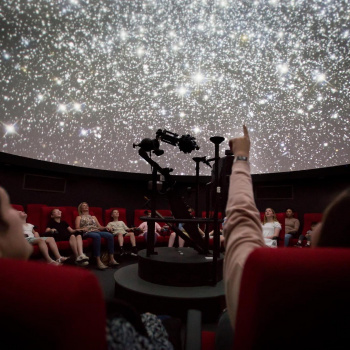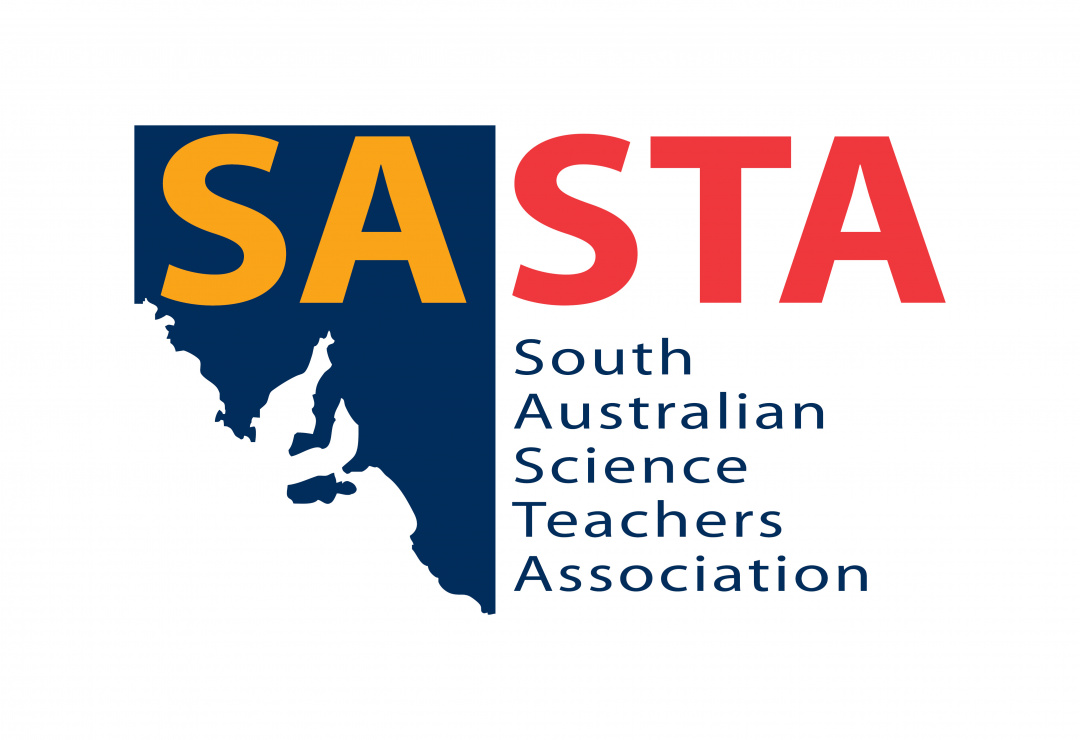Posted by SASTA
on 15/05/2024

Over 400 years ago Johannes Kepler gazed into the night sky and revolutionised our understanding by revealing that planets orbit in ellipses rather than perfect circles, with those nearer to the sun moving at a faster pace than their distant counterparts. Today, within the Planetarium’s immersive dome, participants embark on a journey commencing with an exploration of Kepler’s groundbreaking discoveries.
Here, beneath the darkness of the dome, in stark contrast to the ambient glow of streetlights and urban illumination, we are made aware of the escalating issue of light pollution, impacting not only on navigation but also the natural rhythms of many nocturnal animals. A visit to the Planetarium is a stark reminder of how light pollution has obscured our once pristine view of the night sky. Taking it a step further, within the Planetarium we simulate the absence of Earth’s atmosphere, offering a glimpse into the universe as if we were in space itself.
Children and adults alike are captivated as we travel through space and time, watching how the sky changes throughout the year. The Planetarium’s software allows us to journey to distant planets, compare star sizes, and realise just how small we are within the expanse of the universe.
Despite its apparent magnitude, our Sun pales in comparison to the enormity of stars like Stephenson 2-18 which could literally fit billions of suns within its expanse.
As our Planetarium experience continues to delve into the cosmos, we highlight not only the 88 recognised constellations, including those of the zodiac, but also focus on the indigenous celestial narratives.

Before long it is time for an immersive full-dome movie. Sometimes we gaze into the body of an astronaut, discovering the physiological impact of space travel; on other days we hunt for elusive dark matter in Phantom of the Universe while travelling to Geneva to see how the Large Hadron Collider operates.
We only see around 5% of the visible matter in the universe, the rest is invisible to us. This enigma of dark matter, akin to a cosmic glue, helps preserve the integrity of galaxies. Dark matter was first proposed in the 1930s by Fritz Zwicky, but it was Vera Rubin who discovered the compelling evidence to support Zwicky’s hypothesis. While measuring the orbital speeds of stars in spiral galaxies, Rubin discovered perplexing velocities of the celestial bodies on the outer arms. The visible mass was insufficient to hold such rapidly spinning objects, so mathematically there had to be a tremendous amount of unseen matter cementing the galaxy together. Vera Rubin stated “What you see in a spiral galaxy is not what you get”. Dark matter continues to intrigue us as we learn more about its dark secrets.
As participants filter out, making way for the next group of eager learners, alternative activities await. Lower primary students ooze enthusiasm as they compete in the “Space Race”, creating constellations, mapping planetary distances, and building cube sats. Upper primary and middle school students use spatial reasoning skills to solve packaging puzzles, learning how NASA engineers use the ancient art of origami to create space-saving designs. Senior secondary students act as Interstellar Investigators, learning how scientists use maths and science to answer some of the big questions about our universe, such as the distance to stars and what they are made of. Students touching the 4.5 billion year old Huckitta Meteorite in the foyer break the silence in the corridors as they head to the bus pick-up point and travel back to school.
Once the students leave, the sense of wonder and curiosity persists as the Planetarium ramps up for an evening of telescopes and astrophotography courses.
The Adelaide Planetarium can finally close its doors for the night, ready to quench the thirst for celestial knowledge again tomorrow.
For more information:
Adelaide Planetarium - Connect with UniSA - University of South Australia
https://unisa.edu.au/connect/galleries-museums-and-centres/adelaide-planetarium/
About the authors:
Mary Adam is passionate about inspiring young minds in the field of astronomy. As an educator at the University of South Australia (UniSA) Planetarium, Mary has collaborated with UniSA Outreach team members Nathaneal Scherer and Anita Trenwith to develop curriculum-linked initiatives that enhance STEM learning opportunities for students across primary and secondary levels.


In this Section
Archive
- December 2025
- November 2025
- October 2025
- September 2025
- August 2025
- July 2025
- June 2025
- May 2025
- April 2025
- March 2025
- February 2025
- January 2025
- December 2024
- November 2024
- October 2024
- September 2024
- August 2024
- July 2024
- June 2024
- May 2024
- April 2024
- March 2024
- February 2024
- December 2023
- November 2023
- October 2023
- September 2023
- July 2023
- June 2023
- May 2023
- April 2023
- March 2023
- February 2023
- January 2023
- December 2022
- November 2022
- October 2022
- August 2022
- July 2022
- June 2022
- May 2022
- April 2022
- March 2022
- February 2022
- January 2022
- December 2021
- November 2021
- October 2021
- September 2021
- August 2021
- July 2021
- June 2021
- May 2021
- April 2021
- March 2021
- February 2021
- January 2021
- December 2020
- November 2020
- October 2020
- September 2020
- August 2020
- July 2020
- June 2020
- May 2020
- April 2020
- October 2018
- September 2018
- August 2018
- July 2018

